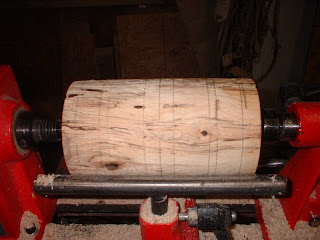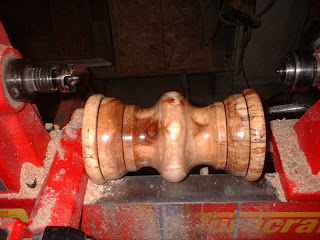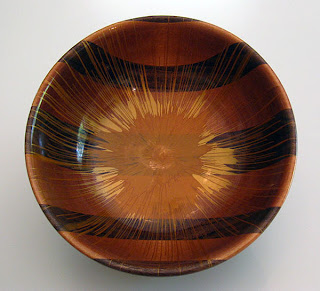That's what happened with the Aspen Bowl. I forgot to take pictures between the last time I posted it and now. As you can see it looks different.
Some Wood Spirits got into the workshop overnight and went hog wild with the color spectrum. I was going to make this bowl very similar to the Twilight Dream bowl that was purchased earlier this month on the Brown County Shops website. But then my wife suggested that I try to achieve a SeaFoam color instead.
I wasn't sure what seafoam looked like so I looked it up and it seems to be variations of light green, depending.
Here in Ruralville you can't just jump in your ride and zip down to the corner paint store and pick up what you need because the corner paint store is a couple hour round trip so I had to improvise.
I started with some dark blue water soluble wood dye from Klingspor's and I diluted it greatly with water.
Then I added some yellow latex paint with turned it green.
Then I added some silver glaze and some soldier blue paint and shook it well. Violin! This is what it ended up as.
I liberally applied the home made concoction with a brush after I covered the lathe bed ways with a newspaper and let it dry for a few hours.
The dye raised the grain so I lightly sanded the whole thing with 120-400 grit Abranet. Wiped it down with a dry cloth and applied another coat of the dye. I let that dry and lightly sanded again and wiped it down.
Then I applied 2 coats of spray polyurethane with light scuffing with 0000 steel wool after each coat. Then I applied 4 coats of regular gloss poly with a Purdy brush.
I'll give it a couple more coats of poly with light sanding in between and then the real fun begins.....








































